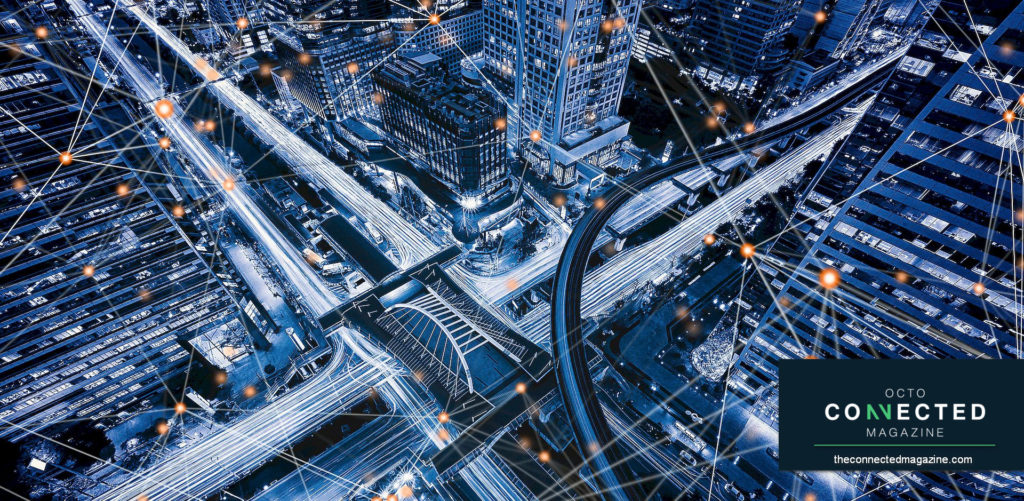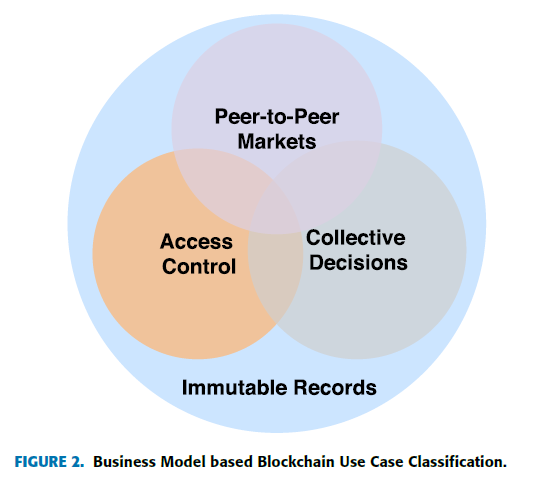
Researchers Charles Shen and Feniosky Pena-Mora from Columbia University, New York, USA, published an article in IEEE Access, regarding blockchain for cities. The article provides an a-up to date review on this issue. Here there are some of the key issues.
Blockchain is considered one of the most disruptive technologies of our time. Numerous cities around the world are launching blockchain initiatives as part of the overall efforts toward shaping the urban future. However, the infancy stage of the blockchain industry leads to a severe gap between the knowledge we have and the actions urban policy makers are taking.
Cities are facing tremendous pressures from challenges associated with rapid urbanization. The United Nations estimates that 4.2 billion or 55% of the worlds’ population lives in urban areas in 2018 and a 25 billion or 13% will be added by 2050. City growth gives rise to not only population explosion, but also severe issues such as traffic congestion, pollution, non-renewable resource depletion, and increasing social inequality [2]–[4].
Recently, researchers started to advocate the notion of ‘‘blockchain cities’’ as the next wave in transforming the urban context to meet the urbanization challenges. In this regard, blockchain may be compared to a General Purpose Technology that is ‘‘complementary to human and organizational capital and whose usage is shaped by political choice and by the urban ecosystem of the citizens, technology vendors and local authorities, depending on the city’s needs and habits’’
Falling into the tendency to believe that innovative technologies like blockchain can automatically transform the ecosystem around us will actually hinder the achievement of the technology’s real potential.
Under this mixed backdrop, the authors attempt to advance the understanding towards how blockchain can fit in the next level of urban development initiatives, by combining foundational frameworks on sustainable and smart cities with blockchain domain knowledge accumulated by the research community.
Reviews of blockchain research in the recent years show that the majority of scholarly work has focused on improvements and challenges of current protocols, primarily for cryptocurrencies in general and for Bitcoin in particular. Little is on research that delves into purported disruptive potential of blockchain. While research on some areas especially cryptocurrencies and payments are well developed, comprehensive understanding regarding application and use cases is generally missing.

APPLICATION-ORIENTED USE CASE REVIEW BY SECTORS
A. DIGITAL GOVERNANCE
Digital governance contributes to the crucial sustainable development agenda, for example, in reducing corruption, lowering administrative costs, ensuring document integrity, connecting donors and disadvantaged groups like refugees and displaced people.
The ‘‘smart administration’’ model requires using sophisticated Information Technology (IT) to interconnect information, processes, institutions, and physical infrastructure to better serve citizens and communities. It thus leads to re-structuring of existing government organizations to integrate traditional functions of government and business.
1) INNOVATIVE IT TRANSFORMATION FOR EXISTING PROCESSES
Under this category, blockchain-based systems have been proposed to transform the government document sharing process. Between the government and the public, blockchain can be used to keep an immutable and transparent record to be verified anytime in the future; between government and businesses, to share information with government organizations in a way that helps business both ensure the confidentiality of the information and avoid liability
There are also blockchain systems targeting at transforming two of the most important government processes – one is voting, which forms the government, and the other is taxation, which finances the government. The goal of an E-voting system is to achieve anonymity, privacy and transparency. Anonymity ensures the non-traceability of the voter’s vote. Privacy allows the transaction of the vote to stay hidden, and transparency ensures the public that the voting mechanism cannot not be tampered with.
In the area of taxation, blockchain solutions enable tax authorities to have more control over the tax system.
It’s about a private blockchain that can be managed by the tax authority to monitor value-added-tax invoices and keep an immutable record on the taxable transactions, thus preventing tax revenue losses.
B. EDUCATION, CULTURE, SCIENCE AND INNOVATION
1) EDUCATION AND LEARNING ACTIVITIES
Blockchain systems have been proposed to help maintain an immutable record of the educational process. There are proposals that record creative works or ideas to establish scholarly reputation , create continuous log of the learner’s activities across different learning organizations, enable global higher educational institutions to award course credits to students who completed courses, and allow issuance and revocation of educational certificates. Education and other records can be inputs to a general personal archive management system and used by companies and services for verification
C. WELL-BEING, HEALTH AND SAFETY
Healthcare is a prominent area where blockchain could find many use cases that help establish an infrastructure to ensure transparency of medical data, analytical methods, reproducibility of results and improved trust in translational medical value chain. As such, they have the potential of significantly reducing the cost of developing new drugs, diagnostic tools, and clinical regimes
1) DRUG AND FOOD SUPPLY CHAIN
Medical supply chain may benefit from blockchain technology to help protect public health. Such systems can trace the origins of drugs by logging time series drug transaction data generated by IoT sensors to a blockchain to prevent counterfeits. The recording of drug transactions among manufacturers, wholesalers, retailers, pharmacies, hospitals, and consumers, can turn the drug supply chain from regulating (government audits) to surveillance (by every participants collaboratively)
There are also systems that tackle the transport aspect of medical products. Medical products require specific quality control and regulatory compliance such as assertion of temperature and humidity during the transport process.
Blockchain is also a hot topic for tracing of food and agricultural products.
3) INSURANCE
Improving the insurance sector is also what people believe blockchain can be helpful. For example, applying blockchain to the insurance life cycle, from seeking a quotation to binding a policy contract, to the claiming process, which could help reduce fraudulent insurance claims.
D. ECONOMY
1) E-COMMERCE
Blockchain efforts are used to fight counterfeit goods in commerce. Another direction in the commerce market involves machine-to-machine payments and human-machine hybrid payments. The machine-to-machine payment system enables a smart cable connected with a smart socket to pay for electricity using Bitcoins without any human interaction. In order to alleviate the high Bitcoin transaction fee problem, it uses a single-fee micro-payment protocol that aggregates multiple smaller payments incrementally into one larger transaction.
2) SHARING ECONOMY
Sharing economy can also be boosted by blockchain’s capability to promote trust-free transactions. It enables peer users to rent devices (e.g., power tools) without disclosure of any personal information.
E. TRANSPORTATION
1) VEHICLE INFORMATION MANAGEMENT
Vehicle life cycle information is critical for the huge car markets. A blockchain-based system can be used for recording and managing vehicle data to increase transparency, reduce odometer and other frauds.
2) GOODS TRANSPORTATION
In the goods transportation area, there are many discussions on blockchain as a way to digitize the exchange of shipping documentation, bill of lading and compliance, all.
Unlike other solutions like Uber and Lyft, a blockchain-based solution allows better personal privacy protection as the taxi software platform cannot obtain the entire itinerary of the user; the user can also control access to his travel data records.
Vehicle-to-Everything communications is a key component in the proper functioning of an intelligent transportation system. Blockchain technology can be used as a decentralized alternative to existing security credential management systems by using blockchain technology to remove the need for centralized trusting authority. It improves the global revocation algorithm performance through hierarchical consensus, and creates accountability for misbehaving parties.
Software updates for smart vehicles is also important to keep the system up-to-date and secure. Blockchain-based security architecture can be used to perform over-the-air updates for smart vehicles remotely, or to securely distribute the latest software to service centers for them to be installed on a vehicle locally.
3) URBAN TRANSPORTATION SUSTAINABILITY
A blockchain-based financial incentive system can be implemented to encourage urban cycling. It allows cyclists to collect their activity data and monetize their commuting habits through the blockchain, thus encouraging sustainable transport in cities.
4) ELECTRIC VEHICLE
Using blockchain for electric vehicles is another intensive area of investigation. A blockchain-based design can enable electric vehicles to autonomously select the most appropriate charging stations among a list of bids according to, e.g. the planned route, car battery status, real-time traffic information and drivers’ preferences. A protocol would allows electric vehicles to find the cheapest charging station within a previously defined region and preserve the privacy of the electric vehicle.
H. WATER AND WASTE MANAGEMENT
1)NATURAL ENVIRONMENT
Use cases found in natural environments include air quality monitoring, sand resources management and carbon credit trading. A blockchain-based system can encourage the constructive involvement of urban citizens in monitoring environment quality to promote a greater awareness of city health.
CONCLUSIONS
For the role-based classification, the researchers emphasize three broad types of roles that blockchain plays. First, the improver role is for those processes that are already conducted peer-to-peer without an intermediary. But use of blockchain makes the process more trustworthy and efficient. This is where the authors believe blockchain can create value without being a dis-intermediator.
Second, the trans former role boosts process efficiency of existing intermediate processes by obsoleting the existing intermediary. Third, unlike the improver and transformer roles which are seen in existing business processes, the enabler role is found in newly emerged peer-to-peer business processes made possible by blockchains. It should be noted that merely stating a blockchain usage area does not allow one to deduce the particular role that blockchain plays in that use case. Different ways of blockchain usage may be applied to the same context and result in improvement, transformation or enablement.
The researchers highlight that Blockchain is potentially a disruptive force in the next wave of urban development initiatives, along with decades of sustainable and smart cities efforts. Many cities around the world have already started their race for the blockchain future through regulatory actions and comprehensive pilot projects in both public and private domains. However, there is great concern about the infancy stage of the blockchain technology and the paucity of understanding on how it can be applicable to future cities.